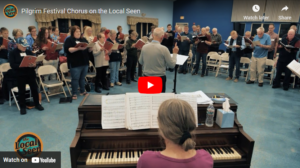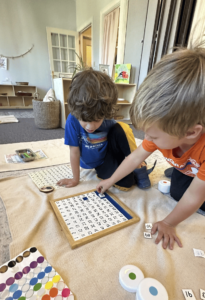
CAPE COD CHRONICLE – It has been 175 years since the Man with the Branded Hand became a central character in the abolitionist movement on Cape Cod. Harwich resident Captain Jonathan Walker suffered the pain of a branding iron bearing the letters “SS” after been imprisoned under Territory of Florida law as a “slave stealer.”
The abolitionist movement had momentum locally in those days, as was well documented with the founding of the Pilgrim Congregational Church in Harwich Port in 1854 when the 20 originators took a strong stance against slavery. That story, as well as Walker’s tale, are told in a new interactive exhibit on display at the church this summer.
The original 1855 Articles of the Church state: “No slave holder shall be admitted to the communion of this church. No one who sympathizes with slave holding shall be admitted to this church. No slave holding church shall be recognized in any way as a church of God.”
The church was started in the height of the abolitionist movement in Massachusetts, Pilgrim Congregational Church Pastor Susan Cartmell said on Monday. Cartmell is the driver behind the abolitionist exhibit at the church and wrote most of the copy for the interactive displays.
The story of the Man with the Branded Hand is known through the John Greenleaf Whittier poem “The Branded Hand.” There are monuments erected for Captain Jonathan Walker in the park in front of Brooks Academy in Harwich Center and in the Evergreen Cemetery in Muskegon, Mich., where he was laid to rest.
But his is a history that has escaped many people, but the new interactive display and self-guided tour within the church, “The History of Pilgrim Church and Abolitionists on Cape Cod,” brings the story back to life.
“We are pleased to share the story of the local visionaries who originated Pilgrim Church. They were part of the abolitionist movement on the Cape and Islands in the mid-1800s,” Cartmell said. “It was a place and time when people felt strongly about the anti-slavery movement.”

Walker was born in Harwich in 1799. His family were farmers, but at the age of 17 Walker went to sea where his travels exposed him to a variety of people and cultures and shaped his abolitionist convictions.
Walker had a boat built in Alabama in 1843 and was in Pensacola seeking to salvage a shipwreck the following year. While there he was approached by four slaves, who asked him to take them to freedom in the Bahamas. He agreed and seven slaves arrived at his boat. The passage was rough; Walker became sick and his passengers took over the helm. They had no sailing experience, so progress was slow. The vessel was seized and the slaves were eventually returned to their plantations.
While funds were raised and an attorney from Boston was sent to defend Walker, a local jury convicted him of slave stealing and he was fined, imprisoned and pilloried with eggs before his legal representation arrived. He also suffered a 20-second branding of the palm of his hand with the letters “SS,” forever marking him as a slave stealer.
“His example of self sacrifice nerved us all to more heroic endeavor in behalf of the slave,” abolitionist Frederick Douglass said of Walker.
The interactive exhibit will include recorded voice portrayals of Walker, Douglass, Harriet Tubman, Abraham Lincoln and a church parishioner, Mrs. Snow. Harriet Tubman will greet visitors to the exhibit in the foyer of the sanctuary through the voice of actress and Harwich resident Pat Carroll. Parishioners John Guertsen, Bonnie and Ross Hall will also serve as voices.

There is a lot of documentation about the abolitionist movement and the formation of the church. Harwich was known for its underground railroad movement, and Cartmell said there will be a section of the church basement containing a long tunnel-like hallway.
A Christian educator will provide more information about Harriet Tubman, who escaped slavery and brought 70 enslaved people over 13 trips to freedom without losing one. A children’s section of the exhibit focuses on the underground railroad and will include other events for kids.
An opening reception with refreshments will be held on the church lawn on Sunday, July 7 at 11:30 a.m., following the morning service, which starts at 10 a.m. Following the historic theme, Rev. Cartmell will offer a sermon on the founding of the church titled “The Call to Change The World.” The church choir will perform “The Battle Hymn of the Republic,” with lyrics by abolitionist poet and author Julia Ward Howe, featuring timpani accompaniment.

The exhibit will be open to the public on Fridays and Saturdays from 10 a.m. to 2 p.m. through Aug. 30. Admission is free. Cartmell said the exhibit may be expended in August to include the 1800s period room on the second floor of the church.
By William F. Galvin






